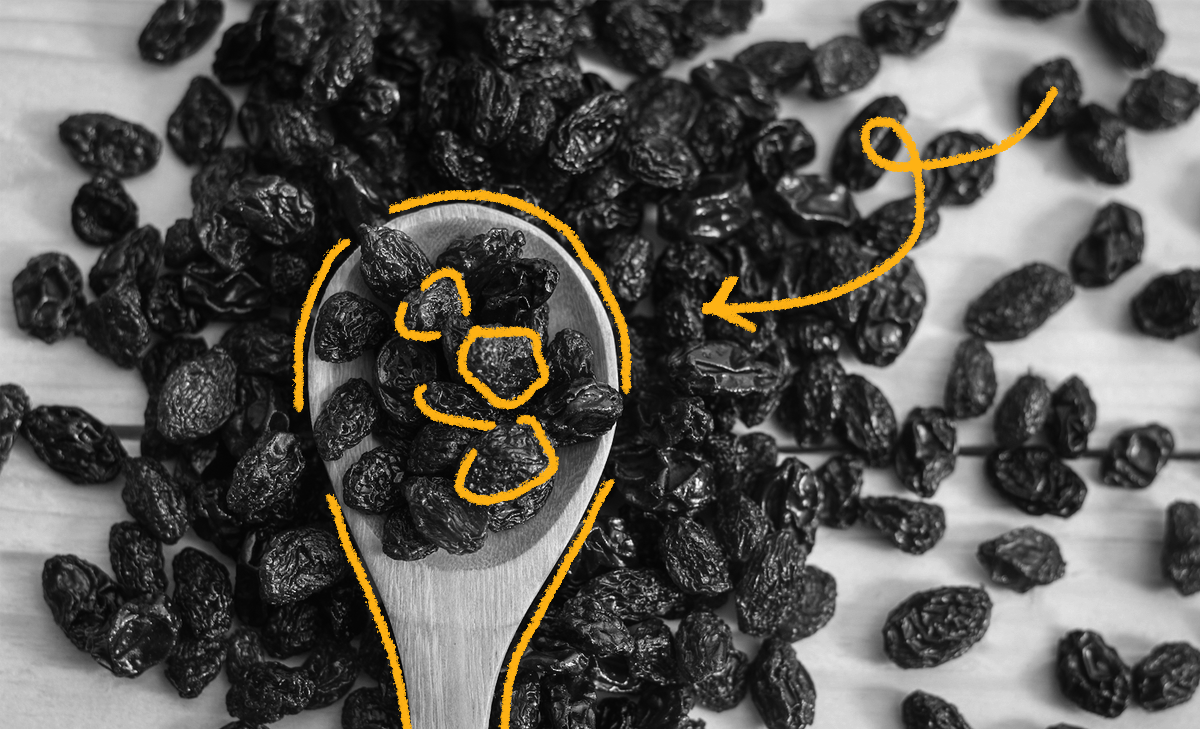They’ve Been Around Since Ancient Times
Raisins are a popular snack enjoyed all over the world. But did you know that raisins were discovered by accident and have been around for much longer than you might think? History indicates that raisins were first discovered – accidentally – when ancient Mediterranean peoples found grapes that had dried on the vines in the hot sun, forming raisins. The Phoenicians and Armenians are considered the first peoples to cultivate raisins – they mostly produced muscat raisins and currants. They later traded raisins to the Greeks and Romans, who quickly embraced the delicious dried fruit. The Egyptians also consumed dried fruit such as raisins, and art indicates that they enjoyed these foods as far back in history as 2000 BC.
They Were Once Accepted as Currency
As raisins became more and more popular, their value grew. Raisins were awarded as prizes for sporting events, accepted as payment for taxes, used to barter, and even prescribed as a cure for various ailments. When Hannibal’s troops crossed the Alps in the Second Punic War, raisins were part of their rations. Emperor Augustus regularly enjoyed small birds stuffed with raisins as part of his feasts. And Marcus Gavius Apicius, the first ancient cookbook author, included at least two recipes in his publication that featured raisins as a key ingredient.
The Crusades Helped Popularize Them
Raisins weren’t introduced to the larger European continent until the 11th century, when knights returning from the crusades brought raisins back to their home territories from the Mediterranean and Persia. When their stores ran out, there was a massive demand for more. Improved shipping techniques allowed raisins to be shipped beyond the Mediterranean to be enjoyed throughout Northern Europe as well, and the spread only continued. By the 14th century, raisins had been integrated into English cuisine as well. In fact, they were so in demand that in 1374, raisin prices in England skyrocketed to the ridiculously expensive sum of two pence and three farthings per pound! Over the next few centuries, raisins continued to grow in popularity and cement their place in European cuisine. In the early 1400s, various Christmas breads made with raisins began to show up, from Italy’s panettone to Germany’s stollen. Around the same time, Russian kulich, an Easter bread filled with raisins, became popular as well.

Colonists and Missionaries Brought Them to the Americas
In 1492, when the Nina, the Pinta, and the Santa Maria set sail, raisins were among the rations because they were both popular and resistant to spoiling. And when Spanish missionaries travelled to Mexico to preach, they brought their love of raisins with them. By the 18th century, the Franciscans had travelled as far north as present-day Sonoma, California. Seedless grapes were first grown in California in the 1870s by William Thompson, and once raisin production ramped up in the area, most growers switched to the seedless variety. But how did California get its start in raisin production?
California Became the Center of Raisin Production in the US
Legend has it that the first Californian raisin crop was created by accident. In 1873, there was a massive heat wave that caused grapes that were originally intended for wine to dry on the vines before they could be harvested. This resulted in the first commercial raisin crop. It was sold in San Francisco as a “Peruvian delicacy,” and the California raisin industry was born! Due to a favorable climate and plenty of available land, California quickly became the top raisin producer for the entire United States. In 1881, newly arrived Armenian immigrants with expertise in raisin production helped to further cement California as a center for raisin production. In June 1898, M. Theo Kearney created the California Raisin Growers Association to help stabilize the market. After the original cooperative fell apart due to infighting, it was reestablished in 1912 as the California Associated Raisin Company, which eventually became the Sun-Maid Company. Today, the Sun-Maid Growers of California is one of the leading raisin corporations.
Raisins in Modern History
During World War I, “war cakes” and mock-meat mince pies made with raisins gained popularity. Raisins were also given to Allied soldiers in some of their rations. With the need for high-energy foods and sugar substitutes at an all-time high in 1942, the War Production Board ordered California’s entire wine grape crop to be made into raisins instead. Years later, astronaut Scott Carpenter became the first person to eat raisins in space when he enjoyed a raisin-filled, granola-like treat in outer space in 1962. From 1984 – 1994, the California Raisin Industry marketing staff ran various campaigns using the California Dancing Raisins to increase demand. The campaign was highly successful and became a cultural phenomenon. Raisins continue to be popular today and are even being researched for their potential health benefits. Around 172,000 acres of raisin grapes are grown in California each year, and the region is now the second-largest raisin producer in the world, surpassed only by the country of Turkey.



